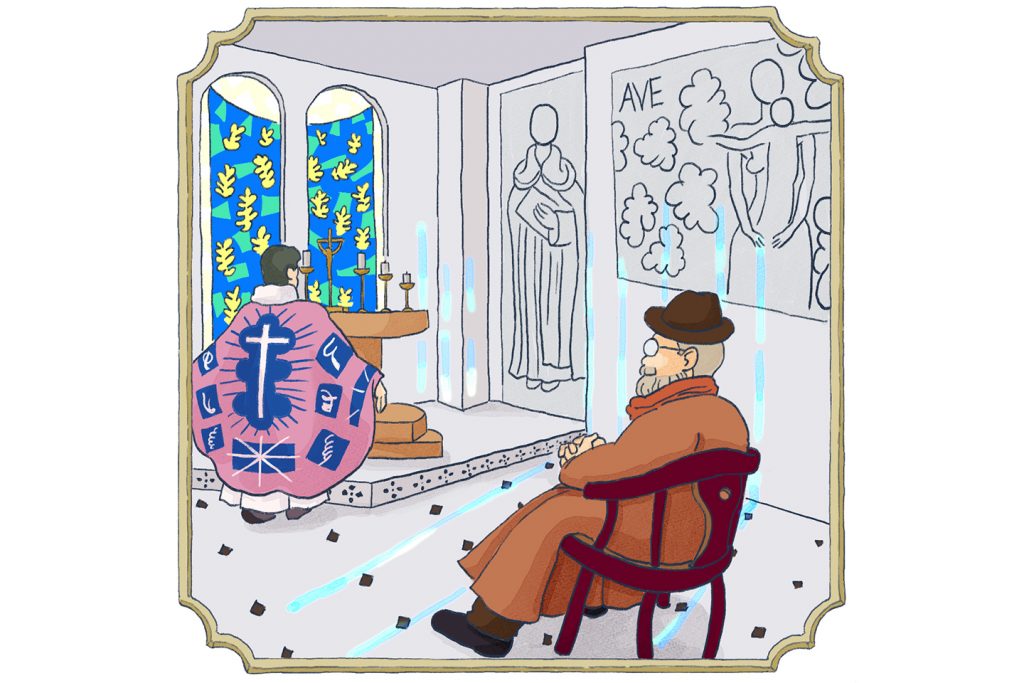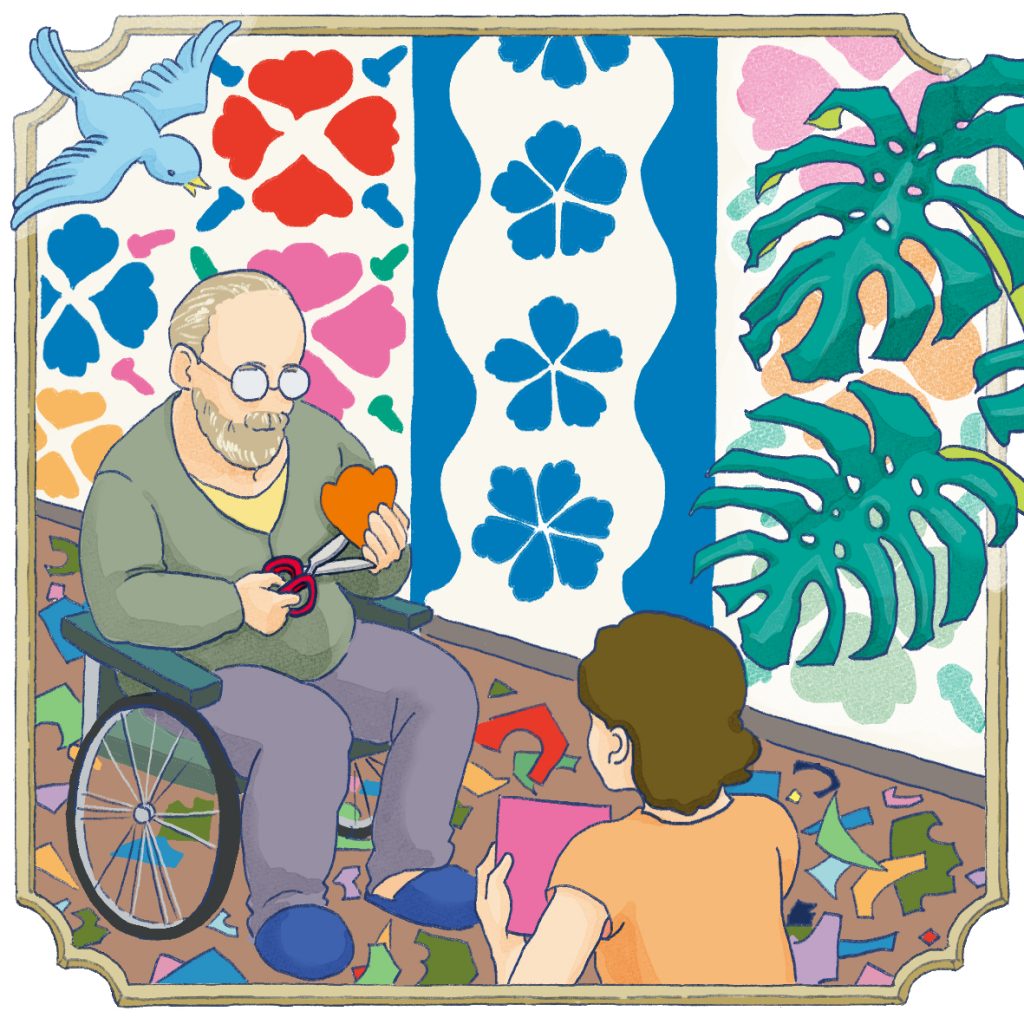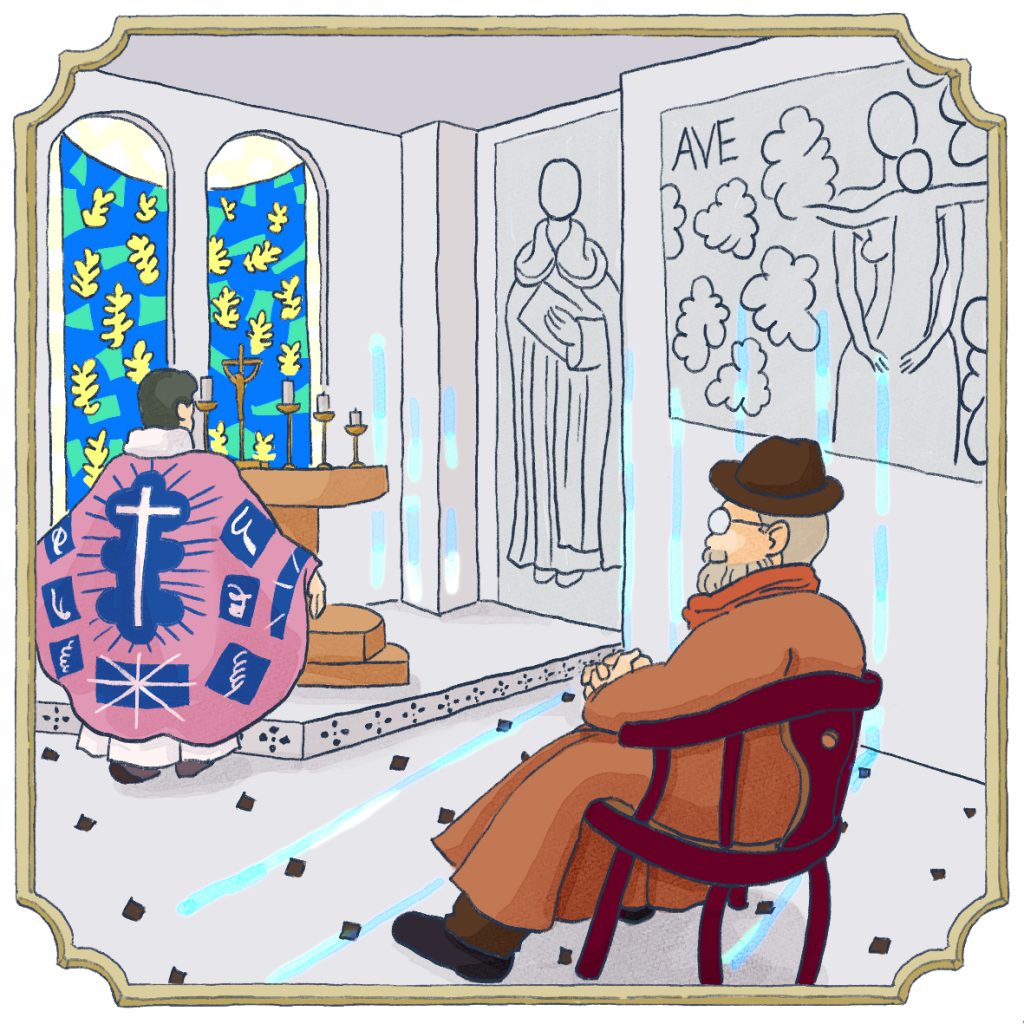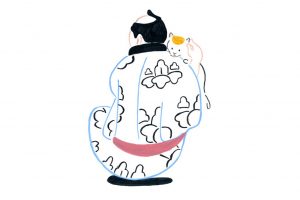In 1930, Matisse was commissioned by art collector and businessman Albert C. Barnes to create a large mural for the Barnes Foundation in Merion, Pennsylvania, United States. Matisse rented a vast garage in Nice (France), where he used a long bamboo pole with a piece of charcoal attached to the end to draw on three separate panels that, when combined, measured approximately 13 meters wide and 3 meters high. These panels became The Dance. Due to the immense size of the mural, he also used smaller oil paintings and cut-outs to plan the composition. Despite being forced to redraw parts due to size errors, the panels were eventually installed at the Barnes Foundation in 1933.
Henri Matisse (Part 2)
Examining artists
No.035
This installment of the “Examining Artists” series features Henri Matisse, one of the greatest masters of 20th-century art.
In the latter part, we trace the path to the monumental expression that Matisse reached at the end of his long artistic career: “cut-outs.”
(Back to Part 1)
Illustration: Nanako Kakei
Text: Naoki Yoneda (The National Art Center, Tokyo)
Translation: Kae Shigeno


The luxurious Hôtel Régina, located on a hill in Nice, became his final home. His room in the hotel was filled with numerous objects, including large houseplants like monstera, birdcages for keeping small birds, and various pieces of furniture and decorations he had collected from antique shops. In this room, where sunlight streamed in through large windows, Matisse, who was unable to move freely due to illness, continued to work energetically with the help of his assistants. In this environment, the technique Matisse actively employed was “cut-outs.” He would cut various shapes from painted paper using scissors and then have his assistants pin these cut-out fragments onto the walls of the room to create large-scale compositions.

From 1948, Matisse was involved in the construction of a Dominican chapel in the small town of Vence near Nice. Particularly striking are the interior decorations of the chapel, composed of stained glass and ceramic murals. He designed the stained glass motif “Tree of Life” based on a cut-out maquette and created the ceramic murals “Saint Dominic,” “Madonna and Child,” and “Stations of the Cross” by drawing the images with a brush and firing them onto white tiles. In addition to these works, Matisse directed the design of almost everything related to the chapel, including the crucifix and the full set of vestments and accessories for the priests. He recognized this project as “the culmination of his entire life’s work.”
Henri Matisse
Born in Le Cateau-Cambrésis.
He moved to Paris to study law but decided to become a painter at the age of 22, receiving instruction in Gustave Moreau’s class at École des Beaux-Arts (National School of Fine Arts).
After exploring Neo-Impressionist expression, he played a central role in the birth of “Fauvism”.
Later, he developed “cut-out” works, which fused drawing and color.
The Chapelle du Rosarie de Vence (Vence Chapel), which he worked on for four years starting in 1948, became his crowning achievement.
Nanako Kakei
Illustrator and researcher of contemporary art and decorative history. Lecturer at the School of Humanities and Culture at Tokai University.
In addition to conducting research on art, she produces illustrations and manga. Her publications include The Illustrated Guide to Contemporary Art and Ito okashiki 20 seiki bijutsu (Super interesting 20th-century art).
https://zigzaqro.com/









